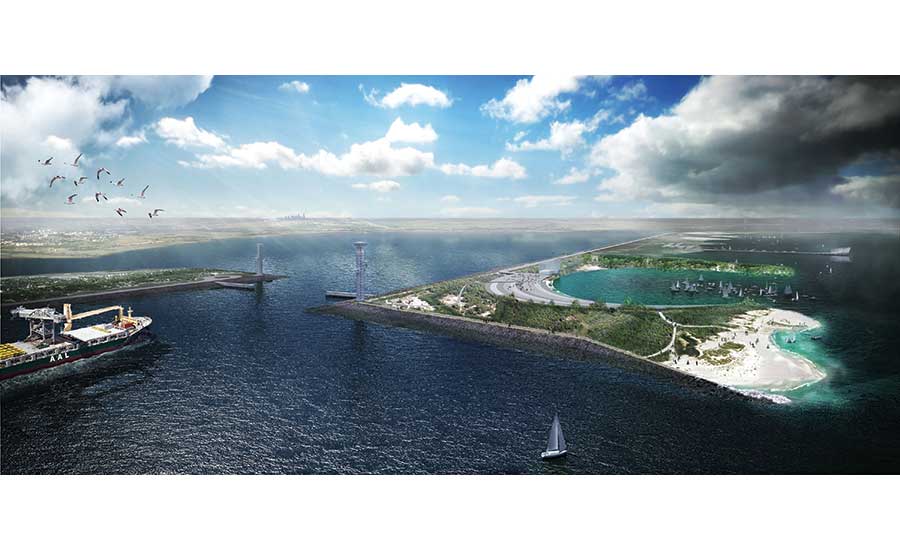Texas’ most vulnerable stretch of coastline is along the Houston-Galveston area, which hosts a slew of refineries, oil tanks and other critical infrastructure. But nine years after Hurricane Ike, which left $29.5 billion of damages in its wake, no projects are in the ground. Time and effort has been focused on research to address the combined effects of sea-level rise, subsidence and storm surge.
 Despite Ike’s effects, Houston didn’t bear the full brunt of the storm. The ship channel, for example, saw storm surge of 13 ft—just under its 15-ft elevation.
Despite Ike’s effects, Houston didn’t bear the full brunt of the storm. The ship channel, for example, saw storm surge of 13 ft—just under its 15-ft elevation.
“The one that keeps me up at night is the ship channel in Houston,” says Darcy Immerman, AECOM’s senior vice president of resilient critical infrastructure, noting the damage that major flooding in the channel could do to the community and the U.S. economy.
Meanwhile, data collected in Galveston since 1908 by the National Oceanic and Atmospheric Administration indicate a relative sea-level rise of about 2 ft per 100 years, which could have massive implications given the region’s limited 50 ft to 100 ft of elevation.
Solutions are mired in state and federal politics. Immediately after Ike, the economic downturn struck, further stifling momentum for coastal protection. But in the past eight months, attentions have inexplicably started to shift, observes Phil Bedient, Rice University professor and Severe Storm Prediction, Education and Evacuation from Disasters (SSPEED) Center director.
Conceived by Bill Merrell at Texas A&M Galveston in 2009, a barrier, or “coastal spine,” called the “Ike Dike” is the most well-known concept developed so far. This 70-mile, 17-ft-high coastal barrier would cost an estimated $4 billion to $8 billion, but no plans are in place.
Combined with the coastal spine, the Mid-Bay Strategy (MBS) could yield a better result, say researchers at SSPEED, a consortium established in 2007 to address severe storms and their impact on the Gulf Coast area.
“With the multiple lines of defense, we not only have the coastal spine to protect against the direct onslaught of the surge, but we have the in-bay component to help protect against residual surge that could certainly be exacerbated by climate effects, especially 20 to 50 years out,” explains Bedient.
The MBS efforts, expected to cost about $3 billion, wouldn’t begin construction for at least five years. The MBS would incorporate elements of localized protection and vulnerable, shrinking coastline with structural barrier systems placed across major tidal inlets and barrier islands, along with solutions such as wetland restoration and a gate structure across the Houston Ship Channel.
Projects under the scope of the MBS would be designed for a 100-year life span. An environmental impact study is now underway.




Post a comment to this article
Report Abusive Comment